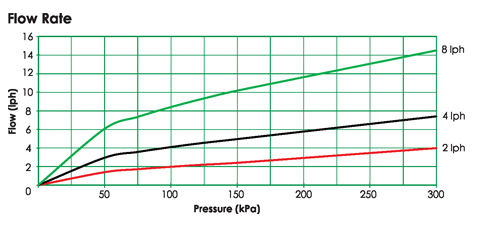Low Pressure Drip Irrigation systems
Posted on January 21, 2021
We are sometimes asked 'can we use drippers on rainwater tanks for our gardens?'.
The answer is yes if some rules are applied. The vertical height of water in the tank ideally should be about 2 to 3 m above the height of the drippers. This will provide an operating pressure for the drippers at around 20 to 30 kPa.
Dripper Type
In terms of the type of drippers used we would recommend that they are non-compensating. This means that the dripper only incorporates a plastic tortuous flow path and does not have any elastic diaphragm which compensates for a range of operating pressures. It is not recommended to use pressure compensating drippers as these can flush at low pressures and provide inconsistent and higher flow rates.

As an example, at 25 kPa pressure the 8 lph dripper will discharge about 3.4 lph. It is a good idea to use the 8 lph dripper as this will provide the maximum flow path size and be less resistant to clogging. Ideally the system should incorporate an inline filter, however this comes at a cost by creating a pressure drop as the filter traps contaminants. If you are using a rainwater tank, particles will tend to settle in the bottom of the tank and if the outlet is above the sediment line you may be able to get away without a filter. The other option if you need a filter is to oversize the filter to minimize the filter head loss.
The only downside to using gravity (low pressure) for drippers is that they can be more susceptible to clogging as the turbulent flow path is more laminar in performance. This should always be considered when using gravity pressure systems.
